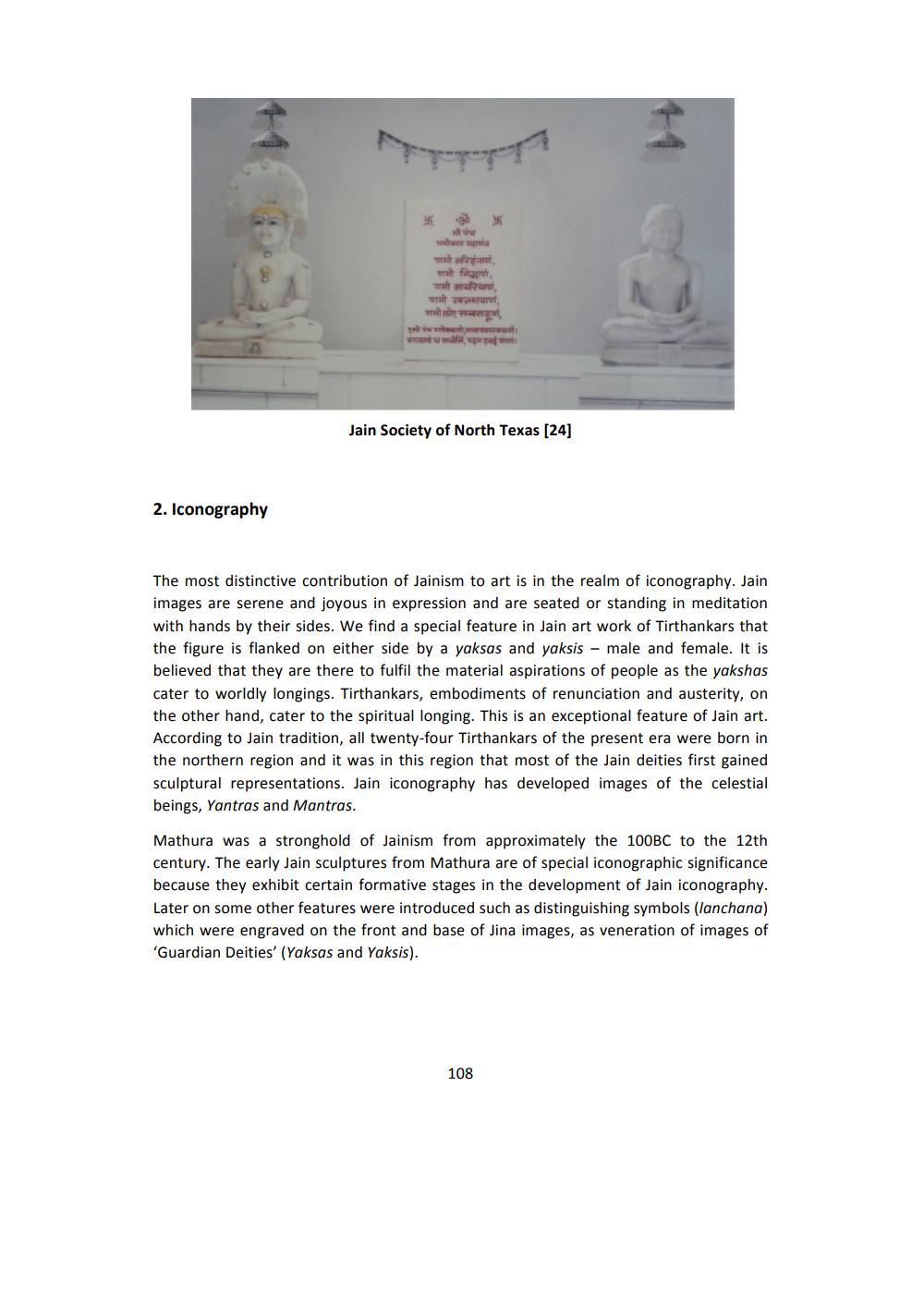________________
पामोअरिहंता, w from पानी आयरिया णमो बसायाचा सामोलोए सबसणं,
भालचसरियाmti
Jain Society of North Texas [24]
2. Iconography
The most distinctive contribution of Jainism to art is in the realm of iconography. Jain images are serene and joyous in expression and are seated or standing in meditation with hands by their sides. We find a special feature in Jain art work of Tirthankars that the figure is flanked on either side by a yaksas and yaksis - male and female. It is believed that they are there to fulfil the material aspirations of people as the yakshas cater to worldly longings. Tirthankars, embodiments of renunciation and austerity, on the other hand, cater to the spiritual longing. This is an exceptional feature of Jain art. According to Jain tradition, all twenty-four Tirthankars of the present era were born in the northern region and it was in this region that most of the Jain deities first gained sculptural representations. Jain iconography has developed images of the celestial beings, Yantras and Mantras.
Mathura was a stronghold of Jainism from approximately the 100BC to the 12th century. The early Jain sculptures from Mathura are of special iconographic significance because they exhibit certain formative stages in the development of Jain iconography. Later on some other features were introduced such as distinguishing symbols (lanchana) which were engraved on the front and base of Jina images, as veneration of images of 'Guardian Deities' (Yaksas and Yaksis).
108




